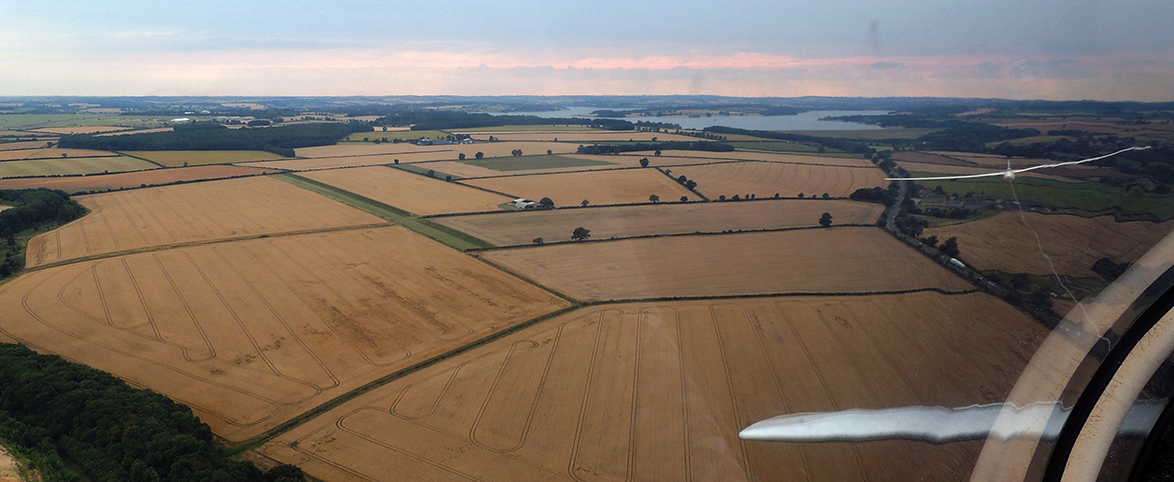 A number of aero-tow retrieves are carried out each year. Generally, requests for ‘Airfield’ retrieves will be accommodated if at all possible. ‘Field’ or non-airfield retrieves will be generally discouraged because of the high level of associated risk.
A number of aero-tow retrieves are carried out each year. Generally, requests for ‘Airfield’ retrieves will be accommodated if at all possible. ‘Field’ or non-airfield retrieves will be generally discouraged because of the high level of associated risk.
To carry out an ‘airfield’ retrieve a pilot must be ‘Retrieve’ rated – see the ‘Pilot Details’ page.
Procedures
Before embarking on a retrieve it is important that the following points are addressed:
- Permission must be obtained from the land owner to carry out an aero-tow retrieve from their land.
- Permission must be sought from the CTP, DCTP or CFI.
- Tugs should normally be refuelled before departure.
- The tug pilot must book out. The booking in/out book is located just outside the office.
- A spare rope must be carried.
- A suitable map must be carried.
- Consider which aircraft to be used. Factors may include cruise speed, onboard equipment, runway surface, base requirements. The authorising person may have more information on this aspect.
- Check ‘The Retrieve Airfield List’ for any special procedures.
- If radio procedures are required, and most airfields do, then the pilot must also hold an R/T rating.
- Be aware of logging procedures (see below) and note the tacho time/hobbs metre before departure.

Techniques
Before take-off ensure you do the following:
Work out your contingency plan to cover actions in the event of an aborted take-off or in the event of a rope break (release) soon after take-off. Brief the glider pilot accordingly.
Decide on a tow speed to suit the glider and pilot. Decide how the signalling is to be arranged and any other relevant details.
Try and ensure that you have radio communication between tug and glider.
After take-off, do a normal climb out until reaching 500′ agl, then accelerate to your agreed tow speed. Once a safe height has been reached or a chosen altitude, reduce power to achieve a slight climb or level flight.
Try to avoid the need to descend on tow, as it can be quite destabilising. If a decent is needed for cloud or airspace, then reduce power slightly to achieve a smooth 100-200fpm descent, anything more will require the glider to use his airbrakes.
Surging is when the tow rope slackens and tautens continually. It can be caused by turbulence, lack of concentration on the part of the glider pilot, or by descending too quickly or inadvertently. Surging can occur during level flight, but is most likely to occur during descending flight. The best solution is to apply power and accelerate or climb slightly until the surging ceases, then slowly return to the desired stable state.
Remember that until the glider releases, you are in charge of both aircraft, navigation and any RT calls.
Logging Procedure
The reverse of the tug log card contains a self explanatory form for recording aero-tow retrieves and other non-towing flights.
Note that the short retrieves, certain minimum charges will apply. A charge equivalent to a 3000′ aero-tow will be applied for a retrieve from Halton or Holmbeck Farm and a 2000′ charge from a retrieve from Eaton Bray. The times should still be recorded as above and the office staff will apply these minimum charges.
Occasionally a visiting glider pilot will want an aero-tow retrieve from Dunstable. All the points on this page must be covered, in addition the tug pilot must take responsibility for ensuring a correct charge is made. The manager should be approached in the first instance, in his absence, note as much relevant information on the tug log card so that a subsequent charge can be made.
Eaton Bray & Holmbeck Farm
Eaton Bray is a local small strip often used by LGC gliders. Pilots must be specifically cleared to tow from there.
In recent years, the strip has become very restrictive, with the width being reduced to little more than 20 meters and with numerous obstacles to the south east end. Currently take-offs should only be made to the north west and with experienced glider pilots. Tug pilots who have not aero-towed from there recently should seek advice on the current situation before attempting a retrieve.
Holmbeck Farm is a useful outlanding strip, situated between Wing and Leighton Buzzard. Pilots must be specifically cleared to tow from there.
This is a private micro-light strip and quite restrictive, however, with appropriate conditions it can be used for aerotow retrieves. Tug pilots who have not aero-towed from there recently should seek advice on the current situation before attempting a retrieve.
Feedback
Please complete a ‘Retrieve Form’ for all retrieves completed, this should include useful information that will be used to update the ‘Retrieve Airfield List‘ and assist other tug pilots retrieving from that airfield.
Link to ‘Retrieve Airfield Map’
Return to ‘Operations’ Return to ‘Front Page’

